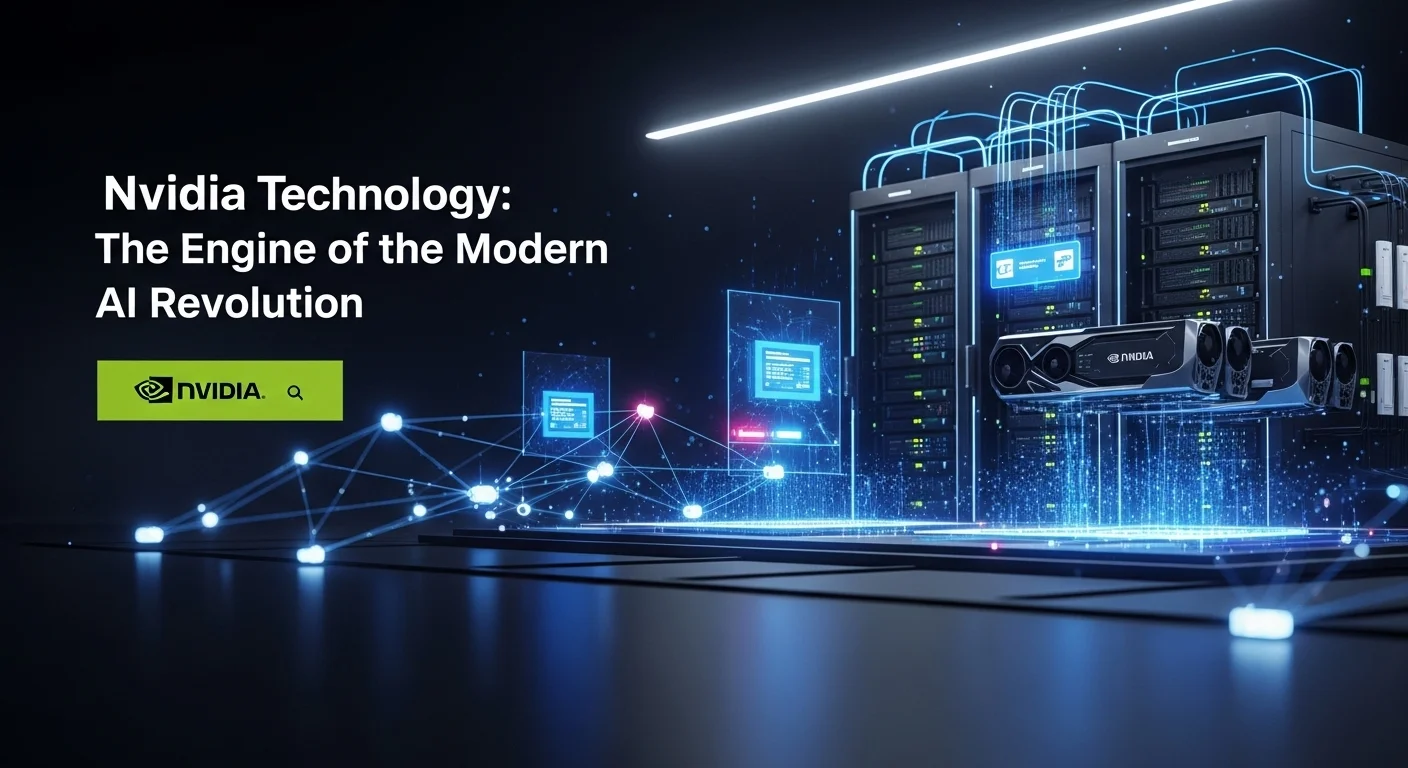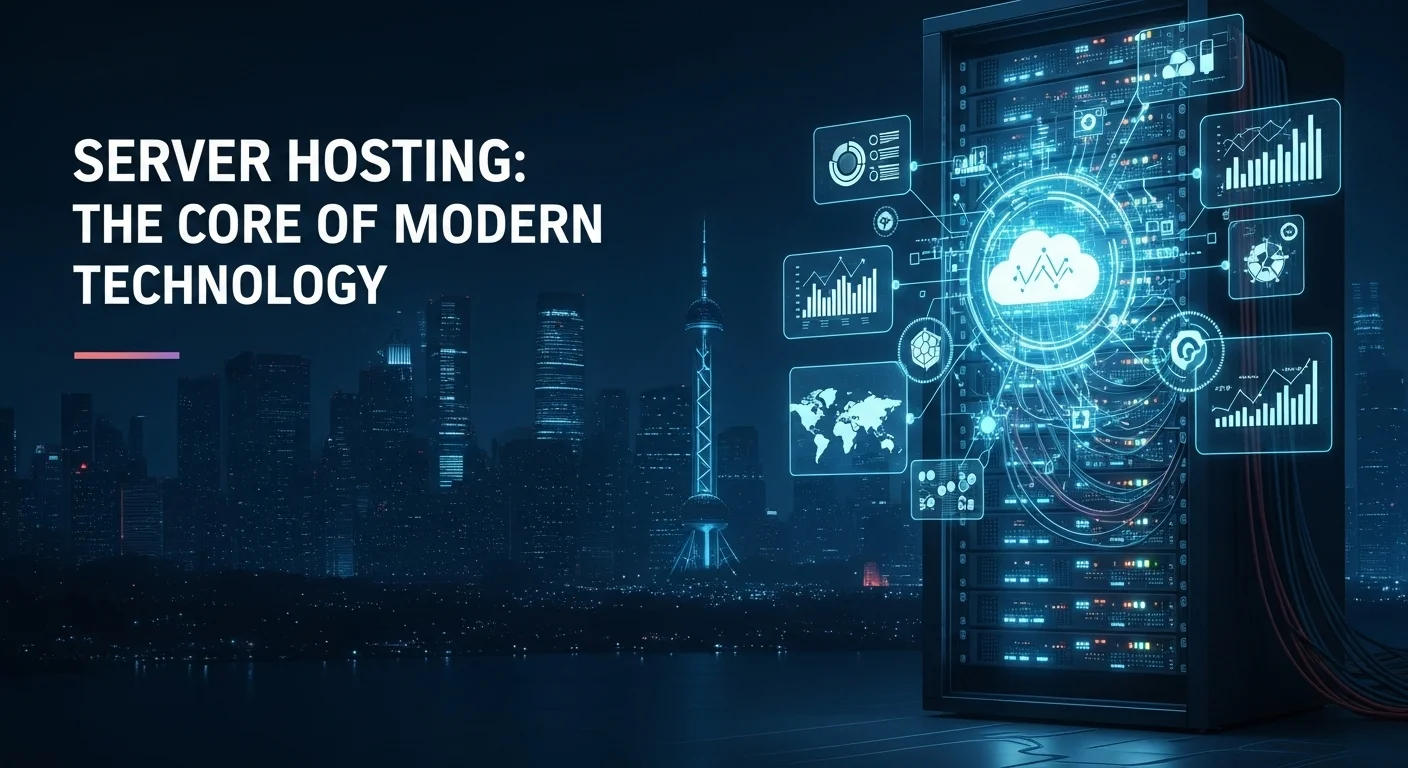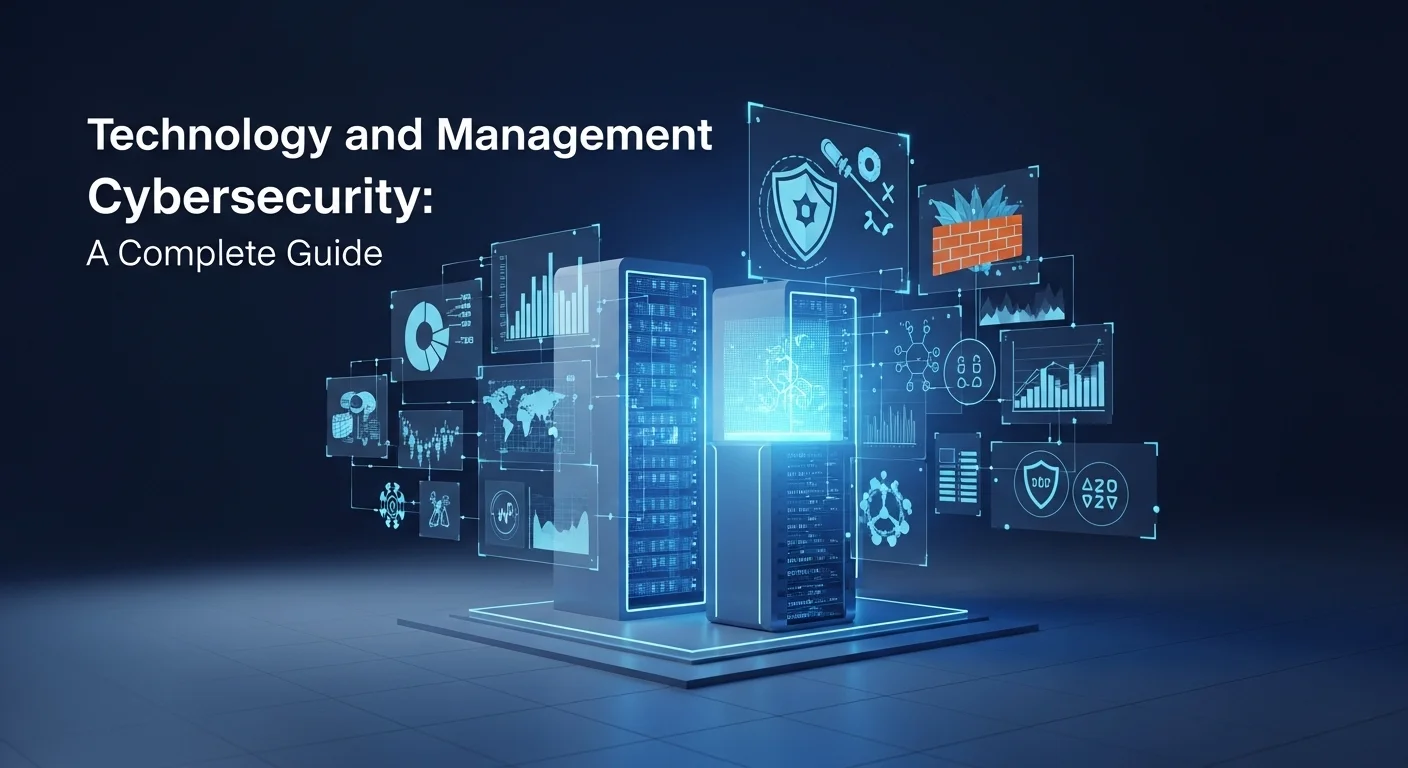How Nvidia Became the Engine of the AI Revolution, and What It Means for Your Business

Executive Summary
I've been in the tech world for a long time, and I've watched Nvidia evolve from a company that gamers loved into the undisputed engine behind the artificial intelligence revolution. Their powerful Graphics Processing Units (GPUs) aren't just for video games anymore; they're the workhorses doing the heaviest lifting in computing today, from training massive AI like ChatGPT to fueling critical scientific research. For any business or tech enthusiast, understanding the Nvidia ecosystem is no longer optional—it's essential. This includes incredible hardware like the H100 Tensor Core GPU, all-in-one supercomputers like the DGX series, and even creative tools like Nvidia Canvas. When we talk about 'Nvidia AI,' we're describing a complete platform that helps companies turn ideas into reality faster than ever before. Systems like the DGX A100 have set the standard for what enterprise AI infrastructure looks like, giving teams the power they need. In this article, I'll walk you through why Nvidia is so important and how its technology is shaping the future for all of us.
Table of Contents
What is Nvidia and Why Is It So Important?
When I first started my career, Nvidia was the brand you turned to for one thing: making your video games look breathtakingly realistic. It’s amazing to think that the same company has now fundamentally reshaped our world by becoming the critical enabler of the modern AI era. To really get why Nvidia is such a big deal, you have to understand a major shift in computing. We moved from relying on general-purpose CPUs to 'accelerated computing,' where GPUs handle massive calculations all at once, at speeds we once only dreamed of. This didn't happen by chance. It was the result of a visionary bet Nvidia made years ago on the power of its GPUs beyond just graphics. Today, that bet has paid off. Nvidia's hardware and software are the foundation for nearly every significant AI breakthrough, from generative AI that can write and create art to the complex simulations that teach self-driving cars.
From Gaming Graphics to AI Supercomputing
Nvidia's journey truly began in 1999 with the invention of the GPU, which changed gaming forever. But the real game-changer for the rest of the world was CUDA, introduced in 2006. Think of CUDA as the magic key that unlocked the incredible power of GPUs for everyone else. Suddenly, developers and scientists could program the GPU directly, using its thousands of cores to speed up their work in science, data analysis, and most importantly, machine learning. This smart move created an entire ecosystem around Nvidia's hardware, making its GPUs the go-to choice for anyone serious about AI. This ecosystem, which we now call Nvidia AI, is a complete set of tools, software, and libraries designed to make building AI easier. It supports all the popular frameworks and helps businesses move from a concept to a final product with incredible speed and security.
The Pillars of Nvidia's AI Dominance
At the core of Nvidia's success are a few key products that serve everyone from individual creators to massive data centers. Understanding them helps you see the big picture.
The Nvidia H100 Tensor Core GPU is the company's flagship processor, and frankly, it's an engineering masterpiece. Built for the enormous demands of large language models (LLMs) and high-performance computing, its real magic lies in the 'Transformer Engine.' This feature cleverly speeds up the training of models like those behind generative AI, making what was once impractical, now possible. For any business looking to build its own large-scale AI, the H100 provides a massive competitive advantage.
For companies that need a ready-to-go AI supercomputer, Nvidia offers the Nvidia DGX line. These aren't just servers with a bunch of GPUs tossed in; they are purpose-built AI machines. The Nvidia DGX A100 became the gold standard for enterprise AI, packing enough power to handle analytics, training, and inference all in one box. This 'data center in a box' approach saves companies the headache and cost of building a system from scratch, letting their teams get to work right away. The newer DGX systems, powered by the H100, take this even further, becoming the building blocks for 'AI factories' that can scale to incredible sizes.
But Nvidia's genius isn't locked away in data centers. Take Nvidia Canvas, a free app that uses AI to turn your simple sketches into stunning, photorealistic landscapes. I've used it myself, and it's incredible. You draw a line for a mountain and a squiggle for a river, and the AI instantly creates a beautiful scene. This tool, powered by Nvidia's consumer RTX GPUs, shows how the Nvidia AI ecosystem is also making powerful technology accessible to artists and creators, supercharging their workflows.
Business Applications and Industry Transformation
The impact of Nvidia's technology is everywhere. In healthcare, it's speeding up drug discovery and medical imaging. In the auto industry, it's powering the simulations needed for self-driving cars. Financial services use it for fraud detection and risk analysis. Even the big cloud providers—Amazon, Microsoft, and Google—rely on Nvidia GPUs to offer their AI services. This combination of the powerhouse Nvidia H100 for training, versatile systems like the Nvidia DGX A100 for businesses, and creative tools like Nvidia Canvas reveals a brilliant, holistic strategy. The Nvidia AI platform is providing the fundamental tools for a new industrial revolution, where intelligence itself is the product.

Your Complete Guide to Nvidia's Technology and Business Solutions
To really get a handle on Nvidia's world, you need to go a layer deeper. It's not just about the hardware; it's about how everything works together, from the silicon chip to the cloud. I've helped many businesses navigate this, and the key is understanding the Nvidia AI ecosystem as a complete, multi-layered platform built for performance. Let's break down the technical side and the strategic choices you'll face when leveraging its most important products: the Nvidia H100, the Nvidia DGX systems, and the creative tool Nvidia Canvas.
A Look Under the Hood: Architecture and Interconnects
Nvidia's dominance comes from its relentless innovation. The leap from their Ampere architecture (in the A100 GPU) to the Hopper architecture (in the Nvidia H100) was a huge deal for AI. The H100 features fourth-generation Tensor Cores, which are specialized processors that are exceptionally good at the math behind deep learning. Its killer feature is the Transformer Engine, which can dramatically slash the time it takes to train large language models, turning weeks of waiting into days.
But a single powerful GPU isn't enough for today's biggest AI challenges. That's where interconnects come in. Think of NVLink as a private superhighway that lets GPUs in a server talk to each other at blistering speeds, far faster than standard connections. This allows multiple GPUs to act like one giant, unified processor. When you scale up to multiple servers, the NVSwitch fabric connects them all into a massive cluster. This is the secret sauce inside the Nvidia DGX systems. For example, a Nvidia DGX A100 system uses this technology to tightly link its eight GPUs, and the newer DGX H100 systems build on this to create what they call a SuperPOD—a blueprint for a full-scale AI factory.
Making the Right Call: Your AI Infrastructure Strategy
One of the first questions I get from clients is, 'Should I buy my own DGX box or just use the cloud?' The answer, as always, is: it depends on your needs.
1. On-Premises with NVIDIA DGX: If your company has a mature data science team, strict data privacy rules, or needs guaranteed performance around the clock, investing in an Nvidia DGX system makes a lot of sense. The Nvidia DGX A100 was so popular because it was a turnkey solution—an 'AI data center in a box' that came ready to go. This cuts deployment time from months to just a few days. These systems also come with access to Nvidia's experts for support. A fantastic feature is the Multi-Instance GPU (MIG), which lets you slice a single powerful GPU into several smaller, isolated instances. This is great for maximizing your hardware investment by serving multiple users or tasks at once.
2. Cloud-Based Solutions: For startups or businesses that prefer flexibility and want to avoid a large upfront cost, the cloud is a great option. All major cloud providers offer instances powered by Nvidia GPUs, including the A100 and the mighty Nvidia H100. To make this even easier, NVIDIA AI Enterprise is a software suite that runs consistently on both the cloud and on-premises systems. This gives you the freedom to develop a model in the cloud and later deploy it on your own hardware (or vice-versa) without a major headache. It’s truly the best of both worlds.
Your Toolkit: Resources and Creative Power
Nvidia's ecosystem is more than just hardware. The NVIDIA NGC catalog is a treasure chest for developers, offering pre-trained models and optimized software for AI and data science that can save you hundreds of hours of work. The CUDA-X AI collection includes libraries like cuDNN and TensorRT that are essential for building and running high-performance AI applications.
On the creative side, Nvidia Canvas is a perfect example of how complex AI can be transformed into an intuitive tool. It uses a sophisticated AI model called GauGAN, which was trained on a Nvidia DGX supercomputer with over five million landscape images. For artists, it’s a practical way to quickly brainstorm ideas or create custom backgrounds. You can even export your work as a layered file to refine it further in Adobe Photoshop. It’s a brilliant demonstration of how Nvidia AI can augment human creativity.
Comparing Generations: DGX A100 vs. H100 Systems
While the Nvidia DGX A100 is still a workhorse in many data centers, systems built on the Nvidia H100 are a generational leap. Think of the DGX A100 as a professional-grade race car—incredibly fast and capable for most tracks. The DGX H100 is the next-generation Formula 1 car, built for the most extreme, cutting-edge races. The H100's Transformer Engine and faster interconnects give it a clear edge for generative AI and massive-scale computing. The choice depends on your work. For many traditional machine learning tasks, the A100 is more than enough. But if you're working at the frontier of AI, the H100 is the key to faster results and future-proofing your work.

Tips and Strategies to Get the Most from Nvidia Technology
Having powerful hardware is one thing, but truly unlocking its potential requires a smart strategy. I've seen companies make huge investments in technology only to use a fraction of its capability. To avoid that, here are some practical tips for implementing, optimizing, and learning within the Nvidia AI ecosystem, whether you're using an Nvidia H100, a Nvidia DGX A100, or creative tools like Nvidia Canvas.
Best Practices for Businesses Adopting NVIDIA AI
1. Start with the 'Why', Not the 'What': Don't buy a Ferrari just to go to the grocery store. The same goes for AI. Before you even look at an Nvidia DGX system, ask yourself: 'What business problem am I actually trying to solve?' Whether it's improving customer service, optimizing your supply chain, or boosting cybersecurity, having a clear goal will guide all your decisions. Nvidia's AI Enterprise suite even offers blueprints for common use cases to give you a head start.
2. Use the Whole Toolkit: Many people think of Nvidia AI as just GPUs, but it's a complete, integrated platform. You have to use the whole toolkit. Dig into the NGC catalog for optimized software. Use tools like Fleet Command for managing AI at the edge. When you're feeding data to power-hungry Nvidia H100 clusters, using the right software to manage that data flow is critical. Ignoring the software stack is like buying a race car and never taking it out of first gear.
3. Get Your Data House in Order: An AI model is only as good as the data it learns from. Before you scale up your computing power, make sure you have a solid data pipeline. Tools like RAPIDS within the Nvidia ecosystem can use GPUs to speed up data preparation. Also, embrace MLOps (Machine Learning Operations) from day one. This means creating repeatable, manageable workflows for your entire AI lifecycle. It's essential when a system like the Nvidia DGX A100 can run experiments in hours instead of weeks.
4. Make Cybersecurity a Priority: As AI becomes more critical to your business, it also becomes a target for attackers. Nvidia's tech can be a powerful ally here. You can train AI models on DGX systems to spot unusual network activity that might signal a breach. Furthermore, specialized hardware like BlueField DPUs can handle security tasks, freeing up your main processors and creating a more secure infrastructure.
Practical Tools and Experiences
For the tech teams on the ground, maximizing performance comes down to using the right tools for the job.
NVIDIA TensorRT: Once your AI model is trained, you need to tune it for the real world. TensorRT is an SDK that optimizes your model for inference—making predictions live—by making it faster and more efficient without sacrificing accuracy. It’s a must-have for deploying AI in production.
NVIDIA Omniverse: If your industry works with 3D models—like manufacturing, architecture, or media—Omniverse is a revolution. It's like a shared virtual sandbox where your entire team can collaborate on complex 3D projects in real time. It's also an incredible tool for generating synthetic data, like creating millions of virtual road scenarios to train a self-driving car's AI.
NVIDIA Canvas for Real Workflows: For creative agencies, Nvidia Canvas is more than a fun app; it's a productivity tool. An art director can generate dozens of photorealistic backgrounds for a campaign in minutes, a task that used to take hours. By exporting the layered file, that AI-generated art can be dropped directly into a professional workflow, showing how Nvidia AI can be a practical partner in creativity.
Strategies for Future-Proofing Your Investment
Technology moves fast. Today's top-of-the-line Nvidia DGX A100 will eventually be succeeded by something even better. To stay ahead, focus on software and flexibility.
Adopt a Hybrid Strategy: By using modern tools like containers (Docker, Kubernetes) and the NVIDIA AI Enterprise suite, you can build applications that run anywhere. This means you can start a project on a cloud instance of an Nvidia H100 and move it to your own hardware later without being locked in. This flexibility is key.
Never Stop Learning: The field of AI is always changing. Encourage your teams to use Nvidia's educational resources, like the Deep Learning Institute (DLI), which offers hands-on training. Staying informed ensures you're always getting the most out of your investment. If you want to keep a pulse on where this is all heading, I always recommend keeping an eye on publications like MIT Technology Review for quality insights.
By pairing powerful hardware like the Nvidia H100 and Nvidia DGX with a smart software strategy and a commitment to learning, you can harness the full power of Nvidia's technology to drive real innovation.
Expert Reviews & Testimonials
Sarah Johnson, Business Owner ⭐⭐⭐
This was a good overview of Nvidia's tech, but as a small business owner, I was hoping for more case studies or simple, first-step examples. It felt a bit geared towards larger enterprises.
Mike Chen, IT Consultant ⭐⭐⭐⭐
As an IT consultant, I found this very helpful for getting up to speed. It connected the dots between the hardware and the business strategy. A little more simplicity on the technical interconnects would have made it perfect.
Emma Davis, Tech Expert ⭐⭐⭐⭐⭐
Finally, an article that explains the entire Nvidia AI ecosystem clearly! As a tech specialist, this was incredibly comprehensive and well-structured. It's a great resource that I'll be sharing with my team.



